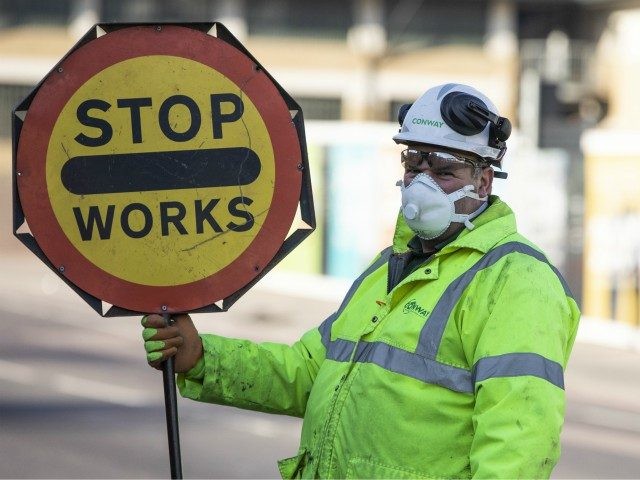There are early signs that social distancing measures are “making a difference” and that the increase of new patients being admitted to hospital with coronavirus is slowing, according to chief scientific adviser Sir Patrick Vallance.
Last week, the British government brought into effect a lockdown, resulting in the closure of most stores, workplaces, and schools. Britons were told to avoid interacting with people outside of their household and to go out only for the minimum necessities or daily exercise, with the police enforcing the rules.
During the Downing Street coronavirus briefing on Monday, the government’s chief scientific adviser said that the measures were already proving to be slowing the spread of the pandemic and relieving pressure on hospitals.
“The measures are in place. They are making a difference, they are decreasing the contact which is so important to spread the disease and we’re doing a good job at cutting that down,” Sir Patrick said in comments reported by The Times. “The ‘stay at home’ message will be reducing the number of cases of transmission in the community and decreasing the number of cases overall.”
Sir Patrick said that while an additional 1,000 patients were entering NHS hospitals daily with coronavirus, that figure was stable and that hospitals are able to cope with that current rate. He explained: “That shows that it’s going up not in an increasing amount but in a constant amount, which may suggest that we’re already beginning to see some effect.”
Vallance added: “I do expect that number to continue. I expect people coming every day to be about that, it may go up a little bit. And in two or three weeks you would expect that to stabilise and to start to go down a bit.”
However, he warned that there was still a lag in social distancing taking effect and that “we expect this to get worse” in the coming weeks when the British outbreak is expected to peak.
Head of statistics, Robert Cuffe, at BBC News remarked that while he remains cautious, these figures represent a “glimmer of hope”, with the actual daily death rate not matching the projected figures over the past few days.
The government adviser’s remarks were echoed by Imperial College London’s Prof Neil Ferguson, who sits on the government’s scientific advisory group for emergencies, who said yesterday that the UK spread was showing signs of slowing down.
The UK, unprepared for such a pandemic, is currently playing catch-up to meet the projected demands of the peak of the Chinese virus. The country has only 8,000 ventilators but needs 30,000 more, while the military has been drafted in to help the NHS build emergency field hospitals, like NHS Hospital Nightingale London which will be able to take its first 500 coronavirus patients this week. Tens of thousands of recently retired and nearly qualified doctors, nurses, and other healthcare professionals have been moved onto the frontline whilst 750,000 people have volunteered to support those in social isolation in the coming months.
Recent reports claim that while the government may have been unprepared, it had not gone without warning that the NHS would be under strain should a pandemic strike. In October 2016, the government was warned, following an NHS stress test codenamed Exercise Cygnus, that the system would fail under the conditions similar to an influenza epidemic without surge capacity. The findings were ignored and at the time, hidden from the public. The Times reported on Tuesday that over a decade ago, the Cabinet Office was informed that a flu-like outbreak across the country would result in doctors and nurses being short of personal protection equipment (PPE) like mouth-nose masks and gowns.

COMMENTS
Please let us know if you're having issues with commenting.